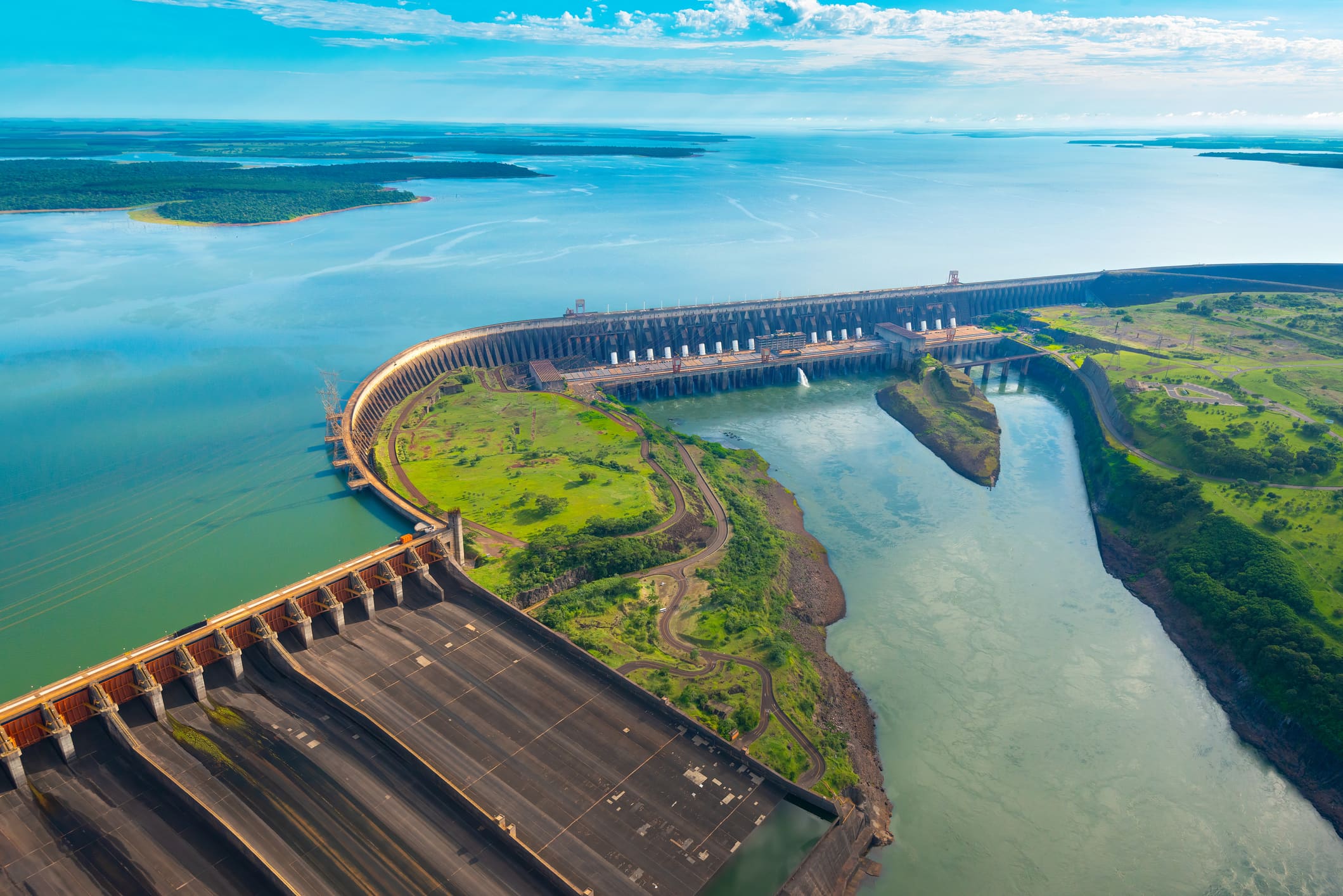
GE Renewable Energy has signed a deal that will see it carry out upgrades to the 14 gigawatt Itaipu hydropower plant, a vast facility straddling the border between Brazil and Paraguay.
In a statement earlier this week, GE Renewable Energy said its Hydro and Grid Solutions businesses had signed a contract related to the works, which are set to last 14 years. Paraguayan firms CIE and Tecnoedil will provide support for the project.
Among other things, GE said the upgrades would include “equipment and systems of all 20 power generating units as well as the improvement of the hydropower plant’s measurement, protection, control, regulation and monitoring systems.”
In 2018, GE said a consortium set up by GE Power and CIE Sociedad Anonima had been selected to “provide electrical equipment for the early stages” of the dam’s modernization project.
Itaipu commenced electricity production in 1984. The website of Itaipu Binacional says the facility “provides 10.8% of the energy consumed in Brazil and 88.5% of the energy consumed in Paraguay.”
In terms of capacity, it is the world’s second biggest hydroelectric power plant after China’s 22.5 GW Three Gorges Dam.
According to the International Energy Agency, 2020 saw hydropower generation hit 4,418 terawatt hours to maintain its position as “the largest renewable source of electricity, generating more than all other renewable technologies combined.”
The IEA states that nearly 40% of the planet’s hydropower fleet is at least 40 years old. “When hydropower plants are 45-60 years old, major modernisation refurbishments are required to improve their performance and increase their flexibility,” it says. At 38, Itaipu would appear to be on the cusp of this threshold.
Hydropower has its backers, but there are also concerns about the sector’s environmental footprint.
The U.S. Energy Information Administration notes that while hydropower generators may not “directly emit air pollutants” other factors related to dams, reservoirs and generators can have an effect.
“A dam that creates a reservoir (or a dam that diverts water to a run-of-river hydropower plant) may obstruct fish migration,” it says, adding that dams and reservoirs “can also change natural water temperatures, water chemistry, river flow characteristics, and silt loads.”
In addition, the EIA states reservoirs could end up covering areas including archaeological sites and land used for agriculture. “A reservoir and the operation of the dam may also result in the relocation of people,” it says.
Toward the end of April, GE reported that its renewables segment had suffered a loss of $434 million for the first quarter of 2022, compared to a $234 million loss in the first quarter of 2021. Revenues for renewable energy were $2.87 billion, down from $3.24 billion in the first quarter of 2021.